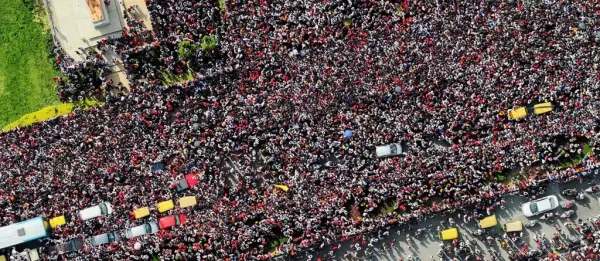If you’ve ever seen a military jet fighter in person, you may have noticed that the wings have a distinctive shape to them, angling downward from the fuselage to their tips. These are known as swept wings, and they’re a big part of what gives high speed fighter craft their distinctive profile and silhouette. However, those swept wings aren’t there just to look cool, they’re also a vital component of the craft that allows it and its pilot to safely endure the rigors of subsonic and supersonic air travel.
Advertisement
Due to the scientific properties that govern lift and flight, aircraft traveling around Mach 1 speeds can be subject to powerful shockwaves centered around the wings. These shockwaves can rattle the craft so badly that it stalls out, placing the pilot in serious danger. With a slight design shift in the form of swept wings, those dangerous shockwaves can be staved off, while the craft also gains improved performance and maneuverability when traveling at high speeds.
This is vital for the kinds of speeds that jet fighters often travel at, even though it’s technically less effective at lower speeds.
High-speed aircraft wings are vulnerable to supersonic shockwaves
Briefly, here’s a little science lesson on the concepts of Mach speed travel. The scientific theorem of Bernoulli’s law postulates that air travel is the result of high speed air currents flowing over and under a plane’s wings. Basically, since the top of a plane wing has a deeper curve than the bottom, the air on top slopes down faster, which reduces pressure around the wings and generates lift. Bernoulli’s theorem isn’t perfect, but it works for what we’re explaining here.
Advertisement
Here’s the hitch: Because of that little top-wing air slope, air travels at a faster speed along the wings than the aircraft is actually moving at. This means that, if a jet is flying near Mach 1, the tops of the wings will reach Mach 1 before the craft does overall. As the air flows down the back of the wings, it starts to slow down. When you drop below Mach 1, a sonic shockwave is created as air bounces back against the sound barrier.
Rather than a sudden, violent shock as some assume, this shockwave instead induces intense drag on the entire jet, with enough force to even stall the engines in the worst case scenario. This means any high-speed aircraft like a jet fighter is at perpetual risk of stalling just from travelling quickly.
Advertisement
Swept wings on jet fighters reduce drag and delay shockwaves
If the problem is with shockwaves occurring over the wings of a jet fighter at subsonic speeds, then naturally, the solution should lie within the wings as well. This brings us to swept wings — a simple, yet elegant fix for staving off those dangerous shockwaves.
Advertisement
By angling the wings of an aircraft backwards from the fuselage, instead of sticking straight out to the sides, the speed of air moving over the wings is slowed significantly. This has two major benefits: First, and most relevant, it delays the formation of supersonic shockwaves. Since it takes longer for shockwaves to become a problem, it’s safer for the pilot to fly at subsonic speeds without worrying about their wings going Mach 1 without them.
The other major perk is that, due to the reduction of wave drag that would normally accumulate on wings, the entire jet is less susceptible to drag overall. With reduced drag comes much easier acceleration and greater maneuverability, not to mention better fuel economy — all vital factors for a military jet fighter flying around the world at high speed.
Advertisement
The only downside to swept wings is that their benefits only manifest when the jet is flying at high speeds. At low speeds, particularly during takeoff and landing, it becomes more difficult to control the craft’s movement. This can be remedied through the use of individually-controlled wing flaps, however, which can selectively increase an aircraft’s lift for this particular occasion.










